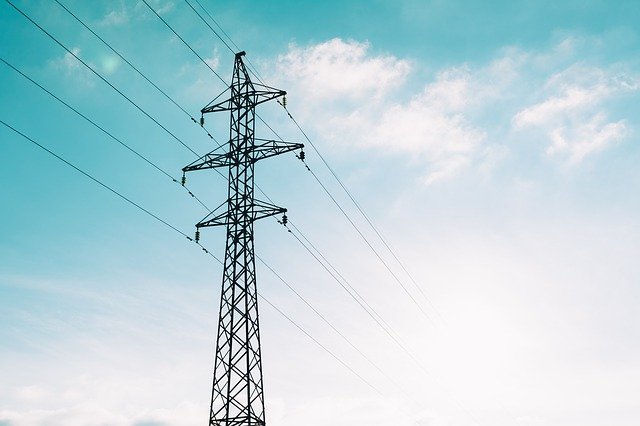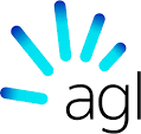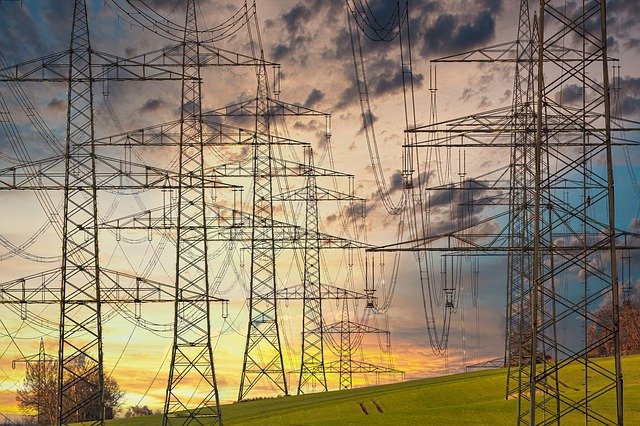
Origin Energy (ORG.ASX)
 The Origin business can be put into two categories, the first is energy retail while the second is generation. Both of these have faced significant headwinds in recent years. On the retailing front, much like the Telcos, the competitive pressures and decreasing cost margins have posed significant threats to the earnings of the sector overall. While Origin has historically managed to grow earnings since the initial demerger from Boral back in the early 2000s, this was primarily through the acquisition of previously state-owned entities and a regulatory environment characterised by privatisation. With the domestic market now consolidated and about 20% of market share, the business faces saturation and a dilemma in growing its top line. The much needed catalyst came in the form of upstream and the arguably more profitable generation. It has developed the Australia Pacific LNG Project (APLNG) – a joint venture between Origin (37.5%), ConocoPhillips (37.5%) and Sinopec (25%) – in the Bowen and Surat basins. Although this remains the likely future driver of growth, spot markets continue to be volatile and, with increasing regulatory intervention and a confrontational attitude given domestic gas shortages, the far more lucrative export business has a way to go.
The Origin business can be put into two categories, the first is energy retail while the second is generation. Both of these have faced significant headwinds in recent years. On the retailing front, much like the Telcos, the competitive pressures and decreasing cost margins have posed significant threats to the earnings of the sector overall. While Origin has historically managed to grow earnings since the initial demerger from Boral back in the early 2000s, this was primarily through the acquisition of previously state-owned entities and a regulatory environment characterised by privatisation. With the domestic market now consolidated and about 20% of market share, the business faces saturation and a dilemma in growing its top line. The much needed catalyst came in the form of upstream and the arguably more profitable generation. It has developed the Australia Pacific LNG Project (APLNG) – a joint venture between Origin (37.5%), ConocoPhillips (37.5%) and Sinopec (25%) – in the Bowen and Surat basins. Although this remains the likely future driver of growth, spot markets continue to be volatile and, with increasing regulatory intervention and a confrontational attitude given domestic gas shortages, the far more lucrative export business has a way to go.To sum up the critical points, ORG operates in a complex and competitive environment that 1) has seen diminishing margins across its core retailing business; and 2) in the segment that is key to providing future earnings growth, is seeing volatility and an increasingly hostile policy environment. So with that context in mind, let’s dive into the numbers

Author: Sid Ruttala
Management has confirmed that FY22 is a trough in earnings and should see some recovery. Within the generation business, higher than expected input costs, including coal and gas prices, have hurt the bottom-line (i.e. higher than anticipated fuel costs) wish was compounded by substantially lower wholesale prices (i.e. Covid related). EBIDTA is likely to come in at $450-600m AUD (note the wide range) though FY23 is likely to see a rebound assuming that wholesale prices stabilise. This result is also somewhat mitigated by the APLNG which in fact benefits, as could be expected by higher spot prices, with sales volume coming in slightly higher than expectations although I personally continue to be disappointed at the realised price at $55USD/bbl. Conservative but nevertheless could’ve been much better. The business’ Net Debt/EBITDA, even taking into consideration the APLNG dividends at 3.4x, continues to cause concern (a hangover from the acquisitive phase).
On the positive side, much of the negative has been offset by consistent business customer wins, strong EBIDTA to cash conversion and stable customer account numbers (a vital metric in our opinion). Looking at CAPEX, the business has been delivering with APLNG CAPEX at record lows and a dividend to ORG of approx. $265m AUD.
So, with all that in mind, why do we think this is a buy?
Simply put, the price and defensive attributes of the business make it a great allocation for the portfolio. Firstly, the energy retailing business, despite its low margins, has defensive attributes and scale matters. With a relatively stable market share (i.e. stable customer account numbers), this becomes a cost-out story with future growth predicated on upstream. Moreover, in comparison with its other significant competitors, ORG is (comparatively) not as encumbered with legacy coal assets, which makes it more palatable for institutional investors. Based on current share prices, it implies a dividend yield of 4.4% with further upside assuming payout ratios of more than 50%. If the company should meet its own targets, it implies that shareholders investing now should have locked in a close to 8% yield by 2025.
Red Flags & Risks: The wholesale electricity business continues to see margin pressures and volatility along with further risks in the policy environment. Though much of the noise has subsided, the possibility of export restrictions being placed on local producers cannot be ruled out. We are also likely to see continued impairments across its legacy generation assets.
My Expectations: A patience game and dividend growth story. My expectations are a fair value target of $6.50 AUD per share assuming opex reduction targets are met as well as continued recovery in the wholesale markets, which we see as improving over the medium to longer term.
Dividend Yield: 4.1%, assuming a price 4.37 AUD
AGL Energy (AGL.ASX)
 AGL has certainly been on shareholder’s minds in recent years and not for the right reasons. The share price continues to be in free fall and the CEO’s departure in the middle of a critical juncture with the demerger of the business certainly does not help the optics. Like ORG, AGL has been hit across its retail divisions and by downward pressure on wholesale prices. Add to that increased uncertainty around its coal assets and the embattled company has what might be termed a perfect storm. Nevertheless, it has been on our watchlist, not least given the relative valuation (and this is even taking into account the broader discount that the energy sector seems to be trading at across the ASX).
AGL has certainly been on shareholder’s minds in recent years and not for the right reasons. The share price continues to be in free fall and the CEO’s departure in the middle of a critical juncture with the demerger of the business certainly does not help the optics. Like ORG, AGL has been hit across its retail divisions and by downward pressure on wholesale prices. Add to that increased uncertainty around its coal assets and the embattled company has what might be termed a perfect storm. Nevertheless, it has been on our watchlist, not least given the relative valuation (and this is even taking into account the broader discount that the energy sector seems to be trading at across the ASX).
Similar to ORG, AGL’s growth has historically been underpinned by acquisition as opposed to organic (the most recent acquisition being Click Energy). However, with the market stabilising, much will be contingent upon management delivering upon cost reductions and the handling of legacy generation assets. AGL has relied upon low-cost coal to date and, unlike ORG, relies upon those assets for a disproportionate amount of its generation (84% coal based). While the proposed demerger of coal assets from the retail and renewables division should theoretically benefit from a management and strategy perspective, there is a great possibility that it may in fact be value destructive given the risk of duplication.
Continued regulatory and policy uncertainty potentially make it an investment for the more adventurous. Under current estimates, we are likely to continue seeing declines in earnings over the next 24 months (approx. 7% p.a.) and the shake up of the C-Suite at such a critical juncture does not help the situation.
Examining the numbers, underlying EBITDA of $926m, representing a decline of 13% with NPAT down even further by 27%, the disconnect being higher depreciation expense and impairments. On the positive, what has been pleasing is that the business has continued to grow the total number of services to customers by 246,000 to 4.2m and has seen an increasing take up of its broadband and carbon-neutral products. So, having said all that, why do we think it is worth considering as a buy?
Simply put, the price. This is a classic reflation trade as we see stabilisation in the wholesale market coming out of Covid. In addition, and despite the negative numbers which are likely to continue into the immediate future, the market may have overreacted with the share price declining close to 60% over the last twelve months. Within the domestic market we continue to see a space for coal at least in the short-term and, given the current pipeline of renewables, we are likely to see choppy supply-demand numbers. Assuming even the worst case scenario, our fair value estimate stands at $12 AUD per share.
What has been particularly concerning however is the lack of management’s clarity around future strategy and even the payout ratios. They initially announce a 100% of NPAT payout ratio and then reneging by going to 75% and announcing a DRP fully underwritten which effectively raises $300m AUD in equity. Poor form, especially when one considers that they had previously embarked in share buybacks at $19 AUD per share.
My Expectations: We will probably see the security bottoming out at $7 AUD per share before consolidating. This implies a P/E of less than 10x and a dividend yield of 9.11%. We are likely to see this stabilise and much will be contingent upon management realising their OPEX reduction targets (not helped by the changes in management). It would, in our view, be unfortunate for the current chairman and interim CEO to continue on in those roles, we would prefer an outsider with a fresh perspective come onboard.Dividend Yield: 8.57% assuming a share price of 7.44 AUD and a normalisation in payout ratios back to 75%.
Final Thoughts – Both ORG and AGL remain cheap, AGL more so. For us, we continue to own ORG with AGL being on the watchlist (we would need to see a clear strategy from management and, more importantly, a leader).

